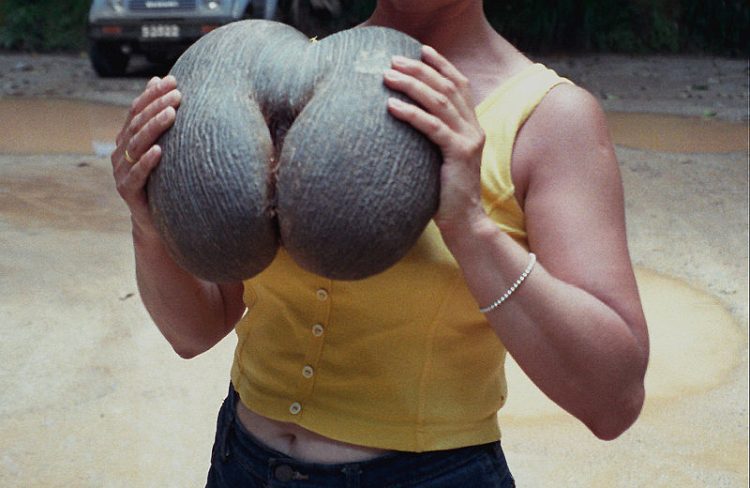The tropical islands of the Seychelles archipelago are home to a legendary palm tree that produces the world’s largest plant seed – a suggestively-shaped thing that can weigh up to 20 kilograms.
Lodoicea maldivica, also known as the double coconut, or coco-de-mer is a remarkable species of palm tree that grows between 25 and 34 meters tall and yields giant seeds that measure 12 inches long, nearly 3 feet in circumference and have a weight of over 40 pounds. Because of their suggestive shape – they look like a pair of female buttocks – they inspired a number of legends and were highly sought after by both monarchs and other people of influence throughout the years. Even today, their rarity makes coco-de-mer seeds highly sought after by collectors.

Photo: Jerzy Strzelecki/Wikimedia Commons
The coco de mer palm tree originates from the islands of Praslin and Curieuse in Seychelles. Today, a number of palm trees can also be found on the small islets of St Pierre, Chauve-Souris, and Ile Ronde. In total, there are now only around 8,000 wild mature Lodoicea maldivica trees in the wild, which puts the species on the endangered list.
The seeds aren’t the only giant thing that coco de mer palms produce. Their fan-shaped leaves can grow 7 to 10 meters long and 4.5 meters wide. That’s quite remarkable considering that this species only grow on nutrient-starved, rocky soil. There isn’t much nitrogen and phosphorus on the islands, but Lodoicea maldivica has adapted to live without them, requiring only about one-third of the nutrients needed by neighboring plants.
Lodoicea maldivica seeds are so sought after because of how rare they are. Not only do they grow on a few islands in Seychelles, but during its centuries-long life cycle, a palm tree will only produce about 100 seeds. A seed apparently takes up to seven years to mature, and another two to germinate. However, germination only occurs when the palm reaches “puberty”, which according to The Spruce, takes between 80 and 100 years.
The palm tree got its most popular name – coco de mer – because sailors once thought that the giant seeds they found floating in the ocean came from “coconuts of the sea” or coco de mer. In fact, the palm tree fruits, which contain the seed, are very heavy so they sink to the bottom of the ocean. After a while, the husk covering them, and the fruits themselves decay, allowing the seeds to rise up and float.
Local legends inspired by the shape of the world’s largest plant seeds speak of male and female coco de mer trees coming together for nights of passion when no one is watching. If anyone witnesses their love, they are either struck blind or die on the spot.
Coco de mer seeds have always been sought-after, even more so today when the species is endangered. A single seed can fetch several thousands of dollars, which is why they are generally kept locked in cages, to discourage poaching.






